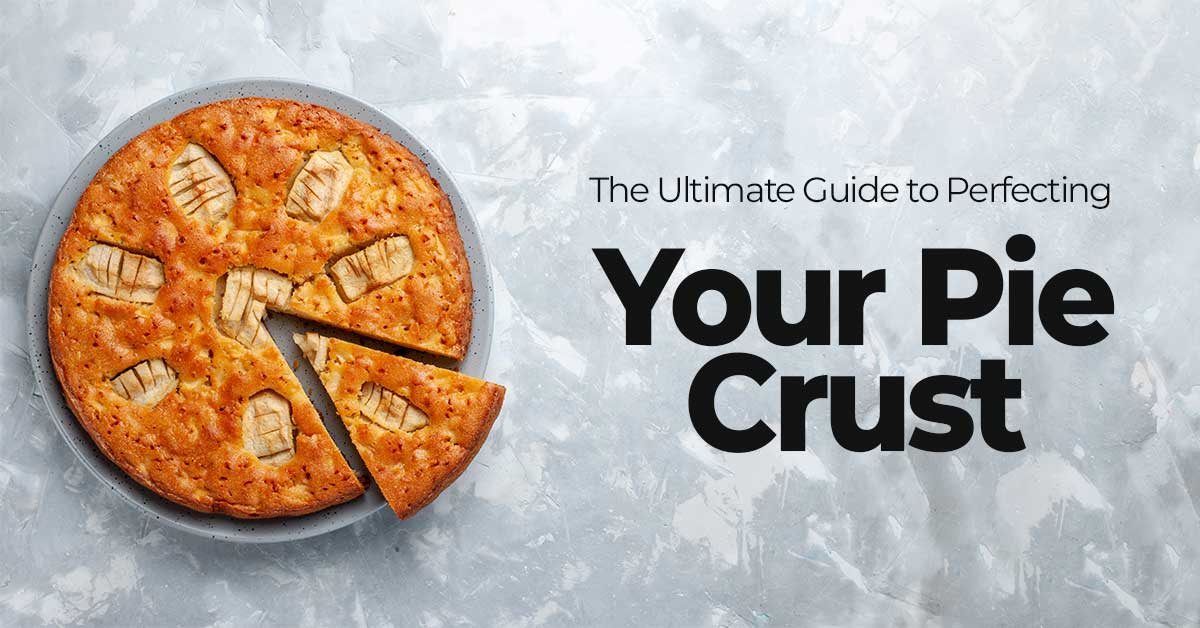Few things bring the warmth and comfort of home quite like a freshly baked pie. And at the heart of every delicious pie lies its crust — the foundation upon which the flavors and textures of the filling rest. Perfecting the art of pie crust can seem daunting, but fear not! With the right technique and a lot of practice, you can achieve pie crust perfection every time. In this comprehensive guide by our baking classes in Chennai, we’ll delve into the intricacies of creating the perfect pie crust, select the right ingredients to master the techniques that will elevate your pies to new heights of deliciousness.
1. Understanding the Ingredients
The first step to mastering pie crust is understanding the role of each ingredient. Traditional pie crust recipes typically call for flour, fat, liquid, and salt.
Flour:
The type of flour you use can change the texture of your crust. All-purpose flour is the most popular choice, but some bakers prefer pastry flour for its finer texture. Experiment with different types to find what works best for you.
Fat:
The fat is what gives the crust its flakiness. Butter adds flavor and richness, while shortening or lard contributes to a flakier texture. Some recipes even call for a mixture of butter and shortening for the best of both worlds.
Liquid:
Water is the most common liquid used in pie crust, but some recipes may call for other liquids such as milk or vinegar. The liquid helps bind the dough together, but be careful not to add too much, as it can make the crust tough.
Salt:
Salt improves the flavor of the crust and helps strengthen the gluten in the flour, resulting in a more tender crust.
2. Mixing the Dough
The key to a tender, flaky crust lies in the mixing method. Over kneading the dough can result in a tough crust, so it’s important to handle it gently. Our baking courses in Chennai can be very useful for people very interested in wanting to know the basics of baking with the help of experts in baking.
Cutting in the Fat:
Whether you’re using butter, shortening, or a combination of both, the fat should be cold and cut into small pieces before incorporating it into the flour. Using a pastry cutter, combine the fat into the flour till it looks like coarse crumbs.
Adding the Liquid:
Gently add the liquid to the flour mixture, stirring constantly with a fork or your fingers until the dough comes together. Be careful not to overmix.
Forming the Dough:
Once the dough forms together, shape it and flatten it. Wrap it in a wrap and refrigerate it before rolling it out.
3. Rolling Out the Crust
Rolling out pie crust can be tricky, but with a few tips and tricks, you can get a perfectly even crust every time.
Flouring the Surface:
Lightly dust your work surface and on the rolling stick to avoid the dough from sticking too much .
Rolling Technique:
Start from the center of the dough and roll it outward, rotating the dough frequently to ensure an even thickness. DOnt make it too thin.
Transferring the Dough:
Carefully transfer the dough that was rolled out to your pie dish by gently folding it in half and then in half again to create a triangle. Place the point of the triangle in the middle of the pie dish and unfold the dough.
4. Fluting the Edges
Fluting the edges of your pie crust adds a decorative touch and it also helps seal the crust to the pie dish.
Trimming the Excess:
Use a sharp knife to take off any extra dough over the edge of the pie dish.
Forming the Flute:
Fold the excess dough under it to create a thick border, then use your fingers to crimp the edges into a decorative pattern. There are many different fluting techniques to choose from, so feel free to get creative!
5. Blind Baking
Blind baking is the process of pre-baking the crust before adding the filling, and it’s important for pies with fillings that don’t require much baking, such as custard or cream pies.
Docking the Dough:
Before blind baking, put holes at the bottom of the crust all over with a fork or sharp knife to prevent it from puffing up during baking.
Using Pie Weights:
To avoid the crust from shrinking or bubbling up, line it with parchment paper and fill it with pie weights or dried beans.
Baking Time and Temperature:
Blind bake the crust in a preheated microwave at 375°F, till it’s just starting to turn golden brown or for 15 to 20 min.
6. Egg Wash
For a beautifully golden and shiny crust, consider brushing it with an egg before baking.
Ingredients:
An egg wash is typically made by whisking together one egg with a tablespoon of water or milk.
Application:
Use a pastry brush to lightly coat the surface of the crust with the egg wash just before baking. Do not let the egg wash drip onto the edges of the pie dish, as it can cause the crust to stick.
7. Troubleshooting
Even the most experienced bakers encounter problems from time to time, but knowing how to troubleshoot can save your pie crust from disaster.
Shrinking Crust:
If your crust shrinks while baking, it may be due to overworking the dough or not chilling it quite long enough before rolling it out. To prevent shrinking, handle the dough gently and chill it thoroughly.
Soggy Bottom:
To prevent a soggy bottom crust, consider using an aluminum foil to cover the edges of the crust during baking. You can also try brushing the base of the crust with a very thin layer of egg white before adding all the filling.
Tough Crust:
Tough crusts are often the result of overmixing the dough or adding too much liquid. Be sure to mix the dough gently and only add as much liquid as necessary to bring it together.
8. Practice Makes Perfect
Like any culinary skill, perfecting the art of pie crust takes practice. Don’t be discouraged if your first few attempts aren’t picture-perfect — with time, experience and guidance from our baking institute in Chennai, you’ll soon be turning out pies worthy of praise.
In conclusion, mastering the art of pie crust is a rewarding endeavor that will improve your baking skills to new heights. By understanding the role of each ingredient, mastering mixing and rolling techniques, and troubleshooting common problems, you’ll be well on your way to creating pies that are as beautiful as they are delicious. So get ready to impress your friends and family with the perfect pie crust!


